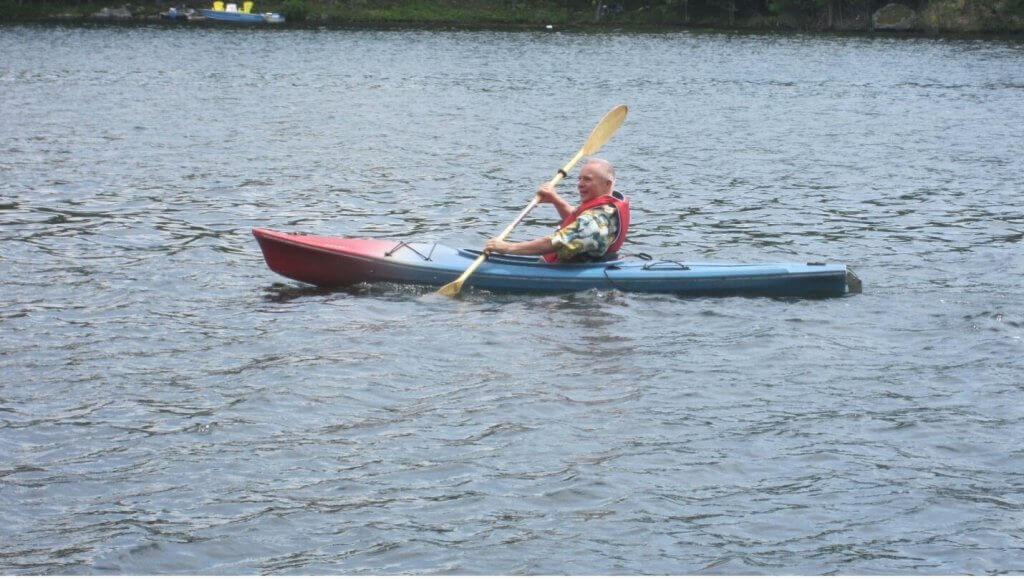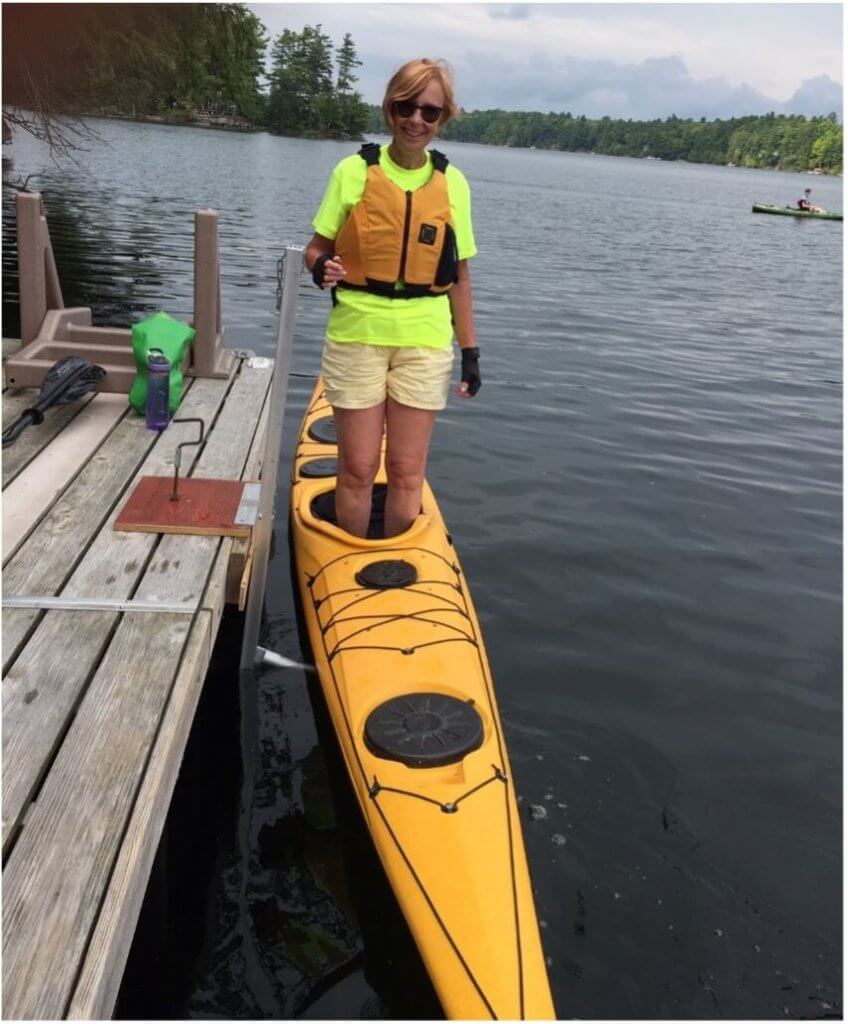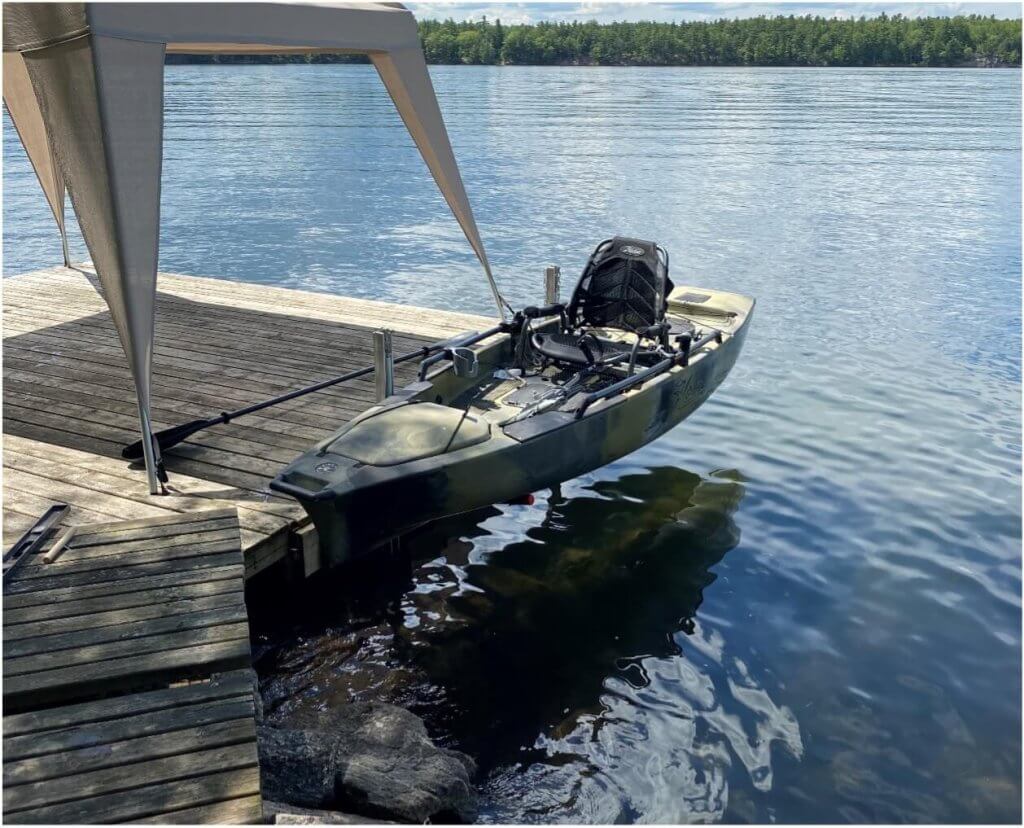Certainly! Here’s how you can include the link using the anchor text “kayaking basics”:
“Imagine a sunny day on the lake, where the gentle lapping of water against the hull is punctuated by bursts of laughter and the occasional splash. This is the scene for Joe, a newcomer to the world of kayaking, whose enthusiasm is as bright as his yellow life vest. As he hesitantly maneuvers his kayak, the strokes are clumsy, unpracticed, and his kayak wobbles precariously.
On the same lake, a seasoned paddler, Emily glides by, watching Joe’s struggles with a knowing smile. She remembers her own first days, the struggle to find balance, the challenge of steering straight. But she also knows that with a grasp of kayaking basics, the learning curve is part of the joy. Kayaking, while simple at its core, is a nuanced sport that captivates with its blend of tranquility and adventure.”

Emily’s experience is far from unique. For many who take up the paddle, there’s a universal journey from those initial awkward strokes to the graceful glide of an experienced kayaker. The statistics echo this narrative; more people are drawn to kayaking each year, citing its accessibility and the joy of connecting with nature. However, without the right equipment and guidance, this journey can be more frustrating than fulfilling. That’s why selecting the right kayak and accessories is crucial for new enthusiasts eager to join the sport’s growing ranks.
Diving into the world of kayaking should be as smooth as a paddle’s entry into calm water, and this article aims to ensure that beginners are well-equipped for their adventures. The following sections will outline the principles of choosing the appropriate kayak, essential features to look out for, and additional gear that can enhance the kayaking experience, ensuring that every beginner’s first time on the water is both safe and delightful.
Key Takeaways
- The right equipment is vital for beginners to enjoy kayaking.
- Understanding key features of kayaks ensures a better experience.
- Kayaking is a popular and accessible sport for people of all ages.
Choosing the Right Kayak

Selecting an appropriate kayak involves accounting for the kayak’s type and material, each significantly influencing its performance and suitability for beginners.
Types of Kayaks
There are two types of kayaks:
Sit-on-top Kayaks: Ideal for beginners, sit-on-top kayaks are user-friendly and offer easy entry and exit. They’re stable, often come with scupper holes to drain water, and perform well for casual recreation or fishing. If a fear of spiders is holding you back from taking up kayaking, sit-on-top kayaks offer a great option to alleviate this fear. Mention arachnophobia
Sit-in Kayaks: Offer an enclosed space for your legs, which provides protection from the elements, from UV rays to cold winds, when kayaking. These are often a sleeker design and lighter requiring less effort to paddle.
Recreational Kayaks: These are generally wider, more stable, and great for calm waters. They’re versatile and often designed for comfort, making them a top pick for novice paddlers. These can be either sit-on-top or sit-in-style kayaks.
Touring Kayaks and Sea Kayaks: Built for distance and speed, touring kayaks are longer and narrower, designed for longer trips. These kayaks often come with an adjustable rudder to counteract prevailing winds and currents and help the kayak track in a straight line, which is helpful long open water trips. Beginners with aspirations of long paddles on large bodies of water could consider this type, but keep in mind it requires a higher skill level.
Fishing Kayaks: These are typically pedal-powered, freeing up the hands for fishing. They usually come equipped with features like rod holders and gear storage. These kayaks are heavier requiring more energy to propel in the water. Stability is key in this category, especially for beginners who are also angling enthusiasts.
Tandem Kayaks: Tandem kayaks allow two people to paddle together, making them a fun option for pairs looking to share the experience. Paddling these kayaks requires teamwork and coordination to ensure a fun experience for both parties 😉.
Inflatable Kayaks and Folding Kayaks: Offering incredible portability and storage convenience, inflatable kayaks and folding kayaks are a solid choice for beginners due to their lower cost and ease of transport. They can lack the speed and performance of rigid kayaks but are good for leisurely outings.
Whitewater Kayaks: These kayaks are specialized for navigating whitewater waters. Beginners interested in this adrenaline-filled style should seek professional training.
Kayak Materials
- Polyethylene: Durable and affordable, polyethylene is the most common material for beginner kayaks. It’s heavyweight but can withstand impacts well.
- ABS Plastic: Slightly more expensive than polyethylene, ABS plastic kayaks offer a balance between weight and durability. They also boast better UV resistance.
- Composites: Such as fiberglass or Kevlar®, these materials are for high-performance kayaks. They’re lightweight and efficient but less robust against impacts and are generally more expensive.
- Polycarbonate: Transparent kayaks that allow for a unique viewing experience. These are considerably more expensive and not designed for long outings.
Key Attributes:
- Weight and Length: A lightweight kayak is easier to transport, while length can affect speed and tracking. The average paddler strikes the right balance between maneuverability and speed with minimal effort in a kayak that is roughly 12 feet in length. Taller people will need to check the footpegs to ensure the length of the kayak is comfortable for them.
- Width and Capacity: Wider kayaks typically offer more stability and capacity for gear but also require more effort to paddle.
- Performance Factors: Consider attributes like tracking (how straight it paddles), maneuverability (how easily it turns), and stability. Additionally, consider the weight of the kayak, as this plays a role when lifting and storing, as well as impacts the efficiency of paddling. For beginners, stability often trumps other performance factors.
Key Features to Consider
When choosing a kayak for beginners, several features are critical for a positive experience on the water. Novices should focus on finding kayaks that provide stability, comfort, and safety, as well as practical considerations like storage and portability.
Stability and Comfort

Stability is paramount for beginners; they usually require a kayak with a wide hull to prevent capsizing. Comfort is just as important, entailing a comfortable seat that is often adjustable, along with foot pegs to accommodate different leg lengths. Look for recreational kayaks, as they tend to offer both stability and comfort for new paddlers. If you are kayaking from your own dock, consider a low-cost kayak launch to provide stability for easy entry and exit.
Storage and Portability

Beginners should consider kayaks with ample storage space for gear, especially if they plan on longer outings. An easy-to-transport option with wheels is beneficial, so you may want to consider kayaks that are lightweight or have features like carrying handles. Inflatable and folding kayaks score high on portability and often include built-in storage. If you are kayaking from your own dock you may want to consider purchasing a kayak hoist (see below).
Safety and Durability
A kayak’s safety features may include a design that allows for easy re-entry from the water and the addition of a spray skirt to keep the kayaker dry. The durability of a kayak is also crucial, as beginners may cause inadvertent damage to their kayaks during transport of the kayak to the water. They should seek out kayaks made of sturdy materials to ensure longevity and continued safety.
By focusing on these key features, beginners can select a kayak that will serve as a reliable and enjoyable introduction to their paddling adventures.
Kayaks for Different Activities
Choosing the right kayak depends on the activities one plans to engage in. Each kayak type offers distinct features tailored for specific water environments and paddling experiences.
Recreational Paddling
Recreational kayaks are ideal for those looking to enjoy a calm day on the water. There are many options for recreational kayaks that (link to website that explores them). They often feature a comfortable cockpit and storage for a cooler or gear for a great day paddling.
Fishing Adventures
Fishing enthusiasts should opt for specialized fishing kayaks that provide stability, hands-free paddling through pedal power, and customization for rods and gear. The Wilderness Systems ATAK 140, known for its solid build, offers a great platform for fishing endeavors. A well-designed fishing kayak transforms a simple paddling experience into a strategic angling adventure.
Touring Endeavours
For those drawn to longer trips and coastal exploration, touring kayaks such as the Perception Sea Kayak offer sleek design and additional storage for multi-day tours. These kayaks are built for efficiency and speed, making them suitable for covering greater distances. A folding kayak could also be considered for touring due to its portability and ease of transport.
Kayaks to avoid
Short kayaks (less than 10 feet) sold for discounted prices from big box retailers are difficult to maneuver and inefficient to paddle, which can result in a frustrating paddle experience. However, these can be a good option for kids.
Accessorizing Your Kayak
Accessorizing a kayak enhances both safety and the overall paddling experience. Beginners need to ensure they have essential gear for safety, while additional accessories can increase comfort and entertainment on the water.
Essential Gear
Safety comes first when kayaking, and certain accessories are non-negotiable. A reliable life vest is a must-have—it’s a crucial feature that keeps one afloat in emergencies. Paddle selection is also key since they are literally your engines on the water; look for ones that are lightweight yet robust. A spray skirt can be crucial for keeping dry in choppier waters. Additionally, novices should invest in gear storage solutions like dry bags to keep personal items safe.
- Life Vest with a whistle: Mandated by law and essential for safety.
- Paddles: Should be comfortable and match the kayaker’s size and strength.
- Dry Bags: Secure gear storage to protect against water damage.
- Spray Skirt: For sit-in kayaks, keeps the cockpit and kayaker dry.
- Bailer: For enclosed kayaks for open water adventures. In many jurisdictions, these are also mandated by law.
Entertainment and Comfort Add-ons
After securing the essentials, one can consider add-ons for entertainment and extra comfort. Installing rod holders can transform a basic kayak into a fishing platform for anglers. If you’ve gone for a pedal kayak, ensure that the steering system is intuitive and effortless. A kayak with good versatility can be equipped with various accessories for different activities—be it photography, bird watching, or just a leisurely paddle.
- Rod Holders: For hands-free fishing.
- Pedal Kayak Steering: Enables easier maneuvering and allows for hands-free operation.
- Versatility Add-Ons: Mounts for cameras, cup holders, or extra seating pads.
Frequently Asked Questions
Choosing the right kayak as a beginner involves considering stability, affordability, and the type of water you’ll be paddling on. These frequently asked questions aim to help novices in selecting a suitable kayak.
What’s the best type of kayak for someone just starting out?
For new paddlers, recreational kayaks are often recommended due to their wider hulls for stability and ease of use.
Which kayaks are ideal for older individuals new to the sport?
Older beginners may prefer kayaks with comfortable seating and easier entry/exit. The Eddyline Sandpiper, known for being lightweight and stable, is one such model.
What are the top sit-on-top kayak models for new paddlers?
Sit-on-top kayaks are great for beginners due to their stability and ease of getting on and off. The Perception Tribe series is well-regarded for new paddlers.
What should I look for in a fishing kayak if I’m a beginner?
A beginner fishing kayak should offer stability, enough storage for gear, and mounts for fishing accessories. The Wilderness Systems ATAK 140 is often recommended for its comprehensive features.
What are some recommended lengths and sizes for a newbie’s first kayak?
Beginners typically do well with kayaks around 12 feet long as they offer a good mix of stability and maneuverability. Longer kayaks can provide better tracking but may be harder to handle.
